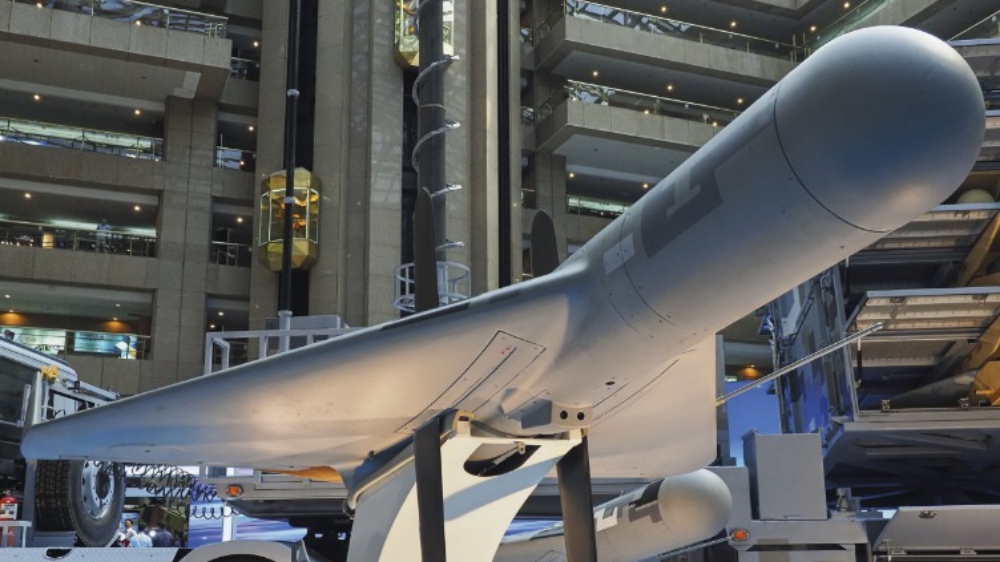Taiwan’s National Chung-Shan Institute of Science & Technology (NCSIST) – the country’s principal defence science research and development agency – showcased the production-ready version of the Chien Hsiang anti-radiation loitering munition and its mobile launcher vehicle for the first time at the 2019 Taipei Aerospace & Defense Technology Exhibition (TADTE), which was held in Taipei from 15 to 17 August.
The Chien Hsiang (roughly translated into ‘Rising Sword’) adopts a comparable airframe design with the fully autonomous Harpy loitering munition manufactured by Israel Aerospace Industries (IAI)’s Malat UAV Division. It features mid-mounted delta wings with full-span elevons terminating in wingtip devices and rudders, as well as two retractable side-force panels in each wing root that are deployed to enhance stability during terminal dive.
NCSIST has also developed a modular trailer-based launcher, which carries up to 12 canisters of ready-to-fire munitions. This configuration enables a mobile Chien Hsiang battery to be rapidly deployed across the Taiwanese main island of Formosa or transported via ship to outlying but strategically important holdings such as the Kinmen and Matsu islands, which Jane’s understands position the munitions well within range of mainland China’s ground-based early warning radar and air-defence systems.
The munition can also be deployed using fixed ground-based launchers or carried aboard the Republic of China Navy (RoCN)’s surface combatants.
Lee Cheng-Ching, deputy general director of NCSIST’s Aeronautical Systems Research Division (ASRD), told Jane’s that any physical similarities to the Israeli Harpy system is purely “coincidental” and that the Chien Hsiang is a fully indigenous weapon system that leverages on ASRD’s work in unmanned aerial vehicle (UAV) platform and propulsion, while the institute’s Electronics Systems Research Division (ESRD) supplied its guidance and passive radar seeker technologies. It is also equipped with a high-explosive warhead that is claimed to be capable of disabling or crippling a medium- to large-sized radar system.
Photo: IHS Markit/Kelvin Wong
Source: Jane’s 360

